Posts by Energy
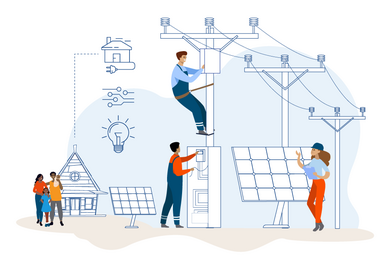
Can Solar Panels Be the Cellphones of the Future?
The tech revolution in solar energy, driving a significant drop in costs, is the best solution to the problem of connecting isolated communities to the power grid. These models, however, also provide a vision of a possible future with decentralized networks or even customers who not only consume energy but also produce and send it into the grid.
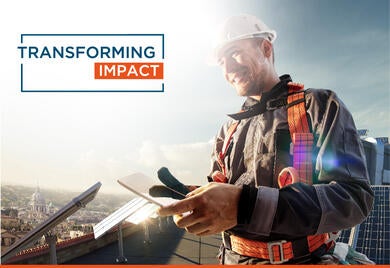
Energy-Efficient Manufacturing in Latin America and the Caribbean: Just Cheaper & Better
Energy efficiency is the most effective mechanism for reducing gas emissions. The manufacturing sector in Latin America and the Caribbean can do its part for the environment while lowering financing costs through international certifications for its energy management systems.
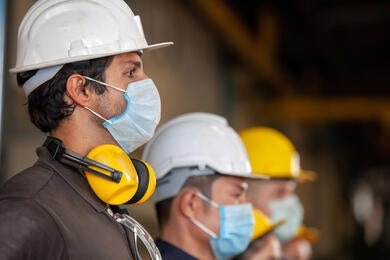
A Six-Step Roadmap to Enhance Private Sector Resilience to Health Risks
An IDB Invest poll shows nearly 60% of projects have temporarily ceased work or faced major project delays because of COVID-19. Early lessons coupled with existing best practices in public health and safety principles provide a six-step action road map to build resilience against such risks.
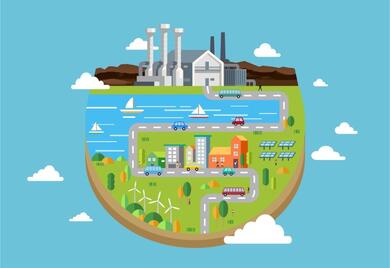
Pioneering climate fund shows us what real transformations can look like
The dry wind and unrelenting sun left one uncomfortably exposed. The wafer thin air challenged every breath and made each step feel like my legs were encased in lead. Yet the journey into this Martian landscape disturbed by volcanoes in Chile’s Atacama Desert was well-worth it. South America’s first, and the highest of its kind at 4500 meters above sea level, the Cerro Pabellón geothermal project, with an installed capacity of 48 MW, is a remarkable achievement. Developed by ENEL Green Power and Chile’s Empresa Nacional del Petróleo with financial support from the Inter-American Development Bank (IDB) and the Climate Investment Funds (CIF), which I helped to design 10 years ago, the visit was especially poignant for me. The trip to Cerro Pabellón in 2018 is part of the CIF@10 campaign marking the 10-year anniversary of the creation of the Climate Investment Funds, which culminated this week at Morocco’s Noor Concentrated Solar Panel complex. Trust and big goals An example of a truly sustainable infrastructure project, Cerro Pabellón employs over 1000 people and produces electricity to power more than 165,000 households, while avoiding over 166,000 tons of CO2 emissions each year. The development of the project involved several indigenous communities and the nearby town of Ollagüe also benefitted following the provision of 24 hour electricity, which the mayor said drastically improved the lives of residents. Cerro Pabellón powerfully demonstrates how the CIFs have helped to accelerate low carbon and climate resilient transformations. Implemented by Multilateral Development Banks, the CIFs provide developing countries with grants, concessional loans, risk mitigation instruments, and equity that leverage financing from the private sector and banks. Since 2008, US$ 8 billion has been pledged with more than 300 projects or programs funded in 72 developing countries to promote clean technology, energy access, climate resilience and sustainable forests. The CIF’s Clean Technology Fund (CTF) made the first real contributions to kick-starting renewable energy markets in many developing countries. With initial support from CTF and other concessional resources, Chile’s performance on renewable energy has skyrocketed. From 2014 through 2017, Chile built 973MW of wind and 1.9GW of solar to become Latin America’s third largest clean energy market. Representing $10 billion of clean energy investment from 2013-2017, Chile was ranked first among developing countries in 2018 for its ability to attract investment. This progress has boosted confidence in the potential of renewable energy to meet electricity demand and to position Chile as a global leader on climate change across different government administrations. Building on his predecessor’s legacy, Chilean President Sebastián Piñera has proposed a target of generating 100% electricity from renewable energy by 2040, starting an ambitious plan for decarbonization of the energy matrix. As we think about how to shift the trillions of dollars necessary to deliver on the Paris Agreement and the Sustainable Development Goals, it is essential to build on the lessons learnt and capacity developed from 10 years of experience with the CIFs. Incorporating a new approach The fund’s projects go beyond reducing emissions by improving lives and kick-starting systemic change to build low carbon and climate-resilient economies. Building confidence with government and the private sector and advancing regulatory changes and improving institutional capacity are CIF hallmarks. CIF projects have proved successful when multilateral development banks are able to combine expertise and governments have a clear sectoral plan supported by communities, finance and industry. The deployment of technical cooperation to prepare projects to address non-financial barriers has also proved paramount for success. As we think about the next decade it’s crucial to build on the CIF’s experience by continuing to work in a programmatic way on key sectors and ensure the scale of finance and resources for institutional strengthening is capable of delivering transformational impact, maintain incentives to work on more innovative projects and flexibly apply financial instruments to deliver greatest impact and mobilize markets effectively. As Chile’s Cerro Pabellón shows, the road to the summit is steep. But we can make it. The lessons learnt from the CIF offer a springboard to do just that. ■ LEARN HOW IDB INVEST CAN OFFER YOU SOLUTIONS HERE. SUBSCRIBE AND RECEIVE RELATED CONTENT [mc4wp_form]

4 ways to invest responsibly in hydropower
Hydropower presents many advantages as a source of energy, even though it is often complex from the environmental and social perspective. It is based on relatively simple and robust technology, easy to adapt to different conditions. Hydropower projects have a long-term life span, often benefiting several generations. Due to its long operational life and low operation and maintenance cost, hydropower generation continues to be highly competitive. Experiences around the world provide ample evidence that proactively addressing the potential impacts of projects early in the pre-feasibility phase is a sound investment decision by developers and contractors alike. The anticipation of potential risks and the identification of opportunities to benefit communities and ecosystems beyond the mitigation of impacts can significantly reduce implementation and operation and maintenance costs. A recent study by Harvard University on the cost of social conflicts in the extractive industry shows that companies usually do not understand and capture the full range of costs of conflicts with local communities. Costs arising from lost productivity due to temporary shutdowns or delays can escalate to millions of dollars. This is not different from what takes place with large infrastructure projects such as hydropower. Responsible development can benefit companies in at least four dimensions: 1. Social acceptance Projects that are developed considering the concerns and expectations of communities and that obtain a “social license to operate” are less prone to face social unrests, protests, or labor related challenges, such as strikes, invasions and vandalism to job sites and equipment. This, in turn, translates into lower costs and opportunities to build win-win alternatives in which both the private sector and communities benefit from the implementation of projects. 2. Reduction of administrative and legal processes Adequate treatment of social and environmental issues significantly reduces administrative and judicial processes that often hinder the implementation of projects and account for significant cost increases. Disputes over compensation, land expropriation, involuntary resettlement, or general mitigation of social impacts can drag on for years, generating direct costs as well as reputational impacts to companies and projects. 3. Financing alternatives Adequate identification of management of environmental and social risks can be directly linked to a wider range of alternatives, incentives, and better terms for financing projects. This can bring substantial upsides, like lower cost of capital to support the implementation of hydropower projects. 4. Reputational gains Positive image and corporate credibility resulting from responsible implementation of a project goes far beyond regional or sector specific benefits. Companies that are recognized as sustainability leaders are able to attract and retain talent, establish long term partnerships with privates, communities and NGOs, and expand involvement in different sectors, amongst others. The current scenario with increasing pressure for water, energy and food supplies, and the uncertainties associated with climate change, make the tangible benefits of hydropower greater than ever before. This represents challenges as well as opportunities for the development of sustainable hydropower projects. Accessing the full range of benefits that can be derived from hydropower requires responsible development of projects. At IDB Invest (formerly known as Inter-American Investment Corporation) we are supporting the implementation of hydropower projects such as Chaglla in Peru and Reventazon in Costa Rica that have been listed in a recent study as examples of best international practices. We will continue to partner with institutions and support projects that provide lessons and contribute to the sustainable development of countries in Latin America. [gallery type="slideshow" size="large" link="none" ids="8082,8083,8084,8085,8087,8088,8089,8090,8091,8092,8093,8095,8096,8098"] Subscribe to receive more content like this! [mc4wp_form]
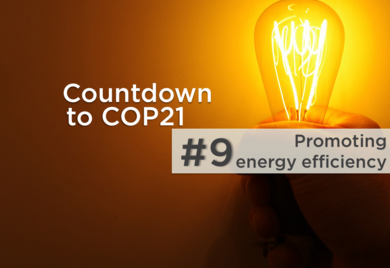
Six key steps to become an energy efficiency expert
Energy efficiency is a key part of cutting costs at any business or in any household. That said, do you know how to perform an energy audit or where you can learn how to do so?
